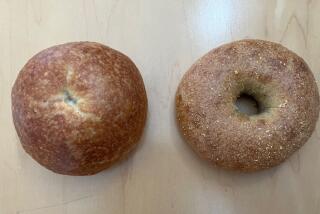Gluten-free food and drinks have become a $4.2 billion market

Who needs wheat anyway? The market for gluten-free foods and beverages is booming, with double digit growth over the last four years as more consumers find themselves diagnosed with celiac disease and food allergies.
The market for products without the gluten protein is valued at $4.2 billion, according to a report from Packaged Facts. Since 2008, it has grown at a compound annual rate of 28% each year and is expected to exceed $6.6 billion by 2017.
Gluten-free snacks and granola bars make up the largest chunk of the industry, contributing to 15% of sales, according to the report (hat tip to BevNET.com).
Gluten is found in wheat, barley, rye and some other grains and is also used as an additive to thicken or flavor many other foods. The vast majority of beers also include gluten.
But this year, nearly two in 10 adults are avoiding such items. Some 18% are going gluten-free, according to Packaged Facts, up from 15% in 2010.
Growing consumer suspicion that grain-based diets are unhealthy or unnatural – hence the recent popularity of the so-called Paleo diet – have helped boost the gluten-free industry.
And the perception that gluten-free products are better for the body-conscious buyer has also helped. Celebrities such as Miley Cyrus have credited their weight loss to gluten-free eating.
But experts have cautioned that such a diet isn’t for everyone – only those diagnosed with celiac disease, which causes the small intestine to react to gluten and disrupts digestion.
Otherwise, adherents may find themselves low on fiber and scrapped for cash, since gluten-free products tend to cost more than other products.
The National Institutes of Health peg celiac disease as affecting about one in every 100 people in Europe and North America. The figure estimated by the University of Chicago Celiac Disease Center is one in 133 healthy people.
As Americans become more particular about their dining choices, restaurants and grocery stores are shaping up. Wendy’s has a gluten-free menu. Signs at Noodles & Co. warn customers that food may feature potential allergens such as gluten and soy.
“If you can demonstrate to families that you can offer them a safe meal, you establish a tremendous sense of loyalty and create repeat customers,” said Chris Weiss, a vice president at the nonprofit Food Allergy & Anaphylaxis Network. “As we look to the future, we’ll definitely see more restaurants doing this.”
ALSO:
Restaurants are super-sizing their nutritional disclosures
Miley Cyrus: ‘Everyone should try no gluten.’ Experts disagree.
Berkeley organic food company Annie’s opens up 64% in IPO







